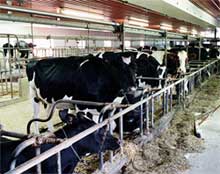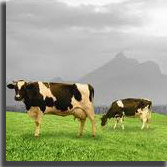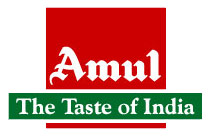| Size of the INDUSTRY | More than 10 million dairy farmers belong to 96,000 local dairy cooperatives, who sell their product to one of 170 milk producers' cooperative unions who in turn are supported by 15 state cooperative |
| Geographical distribution | Delhi, Punjab, Mumbai, Gujarat, Surat, Lucknow, Bihar, Hyderabad |
| Output per annum | Growing 5 % per annum |
| Market Capitalization | The industry contributes about Rs 1,15,970 crores (US $ 25,771 million) to the national economy. |

In India dairying from very much earlier is regarded as an instrument for social and economic development. The country's milk supply comes from millions of small producers, who are dispersed throughout the rural areas. All these farmers maintain an average herd of one or two milch animals, comprising cows and/or buffaloes. Mostly ample labour and a small land base encourage farmers to practice dairying as an occupation subsidiary to agriculture. As income from crop production is seasonal instead dairying provides a stable which is a year-round income and also an important economic incentive for the small farmer.
In India dairy business has been practiced as rural cottage industry over the years. Semi-commercial dairy started with the establishment of military dairy farms and co-operative milk unions throughout the country towards the end of the 19th century. Since Independence this Industry has made rapid progress. A large number of modern milk and milk product factories have since been established.The organized dairies in India have been successfully engaged in the routine commercial production of pasteurized bottled milk for Indian dairy products.

In India Milk production is dominated by small and marginal land-holding farmers and also by landless labourers who in aggregate own 70% of the national milch animal herd.And as the crop production on 78% of the agricultural land still depends on rain, which is prone to both drought and floods, rendering agricultural income is very much uncertain for most of the farmers. Dairying, as a subsidiary source of income and occupation, is real relief to most of the farmers in the society. Usually one or two milch animals enable the farmers to generate sufficient income to break the vicious subsistence agricultural-debt cycle.
The Operation Flood which is the successful Indian dairy development programmed has analyzed that how food aid can be utilized as aninvestment in building the type of institutional infrastructure that can bring about national dairy development. Programmes like this, with similar policy orientations, may prove to be appropriate to dairy development in in India.
India in the early 1950's was commercially importing around 55000 tonnes of milk powder annually to meet the urban milk demand. Most of the significant developments in dairying have taken place in India in this century only.
|
Fluid Milk
|
46.0%
|
|
Ghee
|
27.5%
|
|
Butter
|
6.5%
|
|
Curd
|
7.0%
|
|
Khoa (Partially Dehydrated Condensed Milk)
|
6.5%
|
|
Milk Powders, including IMF
|
3.5%
|
|
Paneer & Chhana (Cottage Cheese)
|
2.0%
|
|
Others, including Cream, Ice Cream
|
1.0%
|
Jobs in Indian dairy industry are mainly in the fields of production and processing of dairy products. An individual with minimum of 60% marks who has bachelor's degree course in the dairy technology can easily be availing an opportunity to work in this industry. For the graduation course in Dairy technology one has to qualify the All India Entrance Test that is affiliated to the Indian Council of Agricultural Research. After that the person can continue with his masters in dairy technology. Jobs would be for the following positions.
- Dairy Scientists: The main job of the dairy scientists is to deal with collection of milk and taking care of the high yielding variety of animals.
- Dairy Technologists: the work of Dairy technology requires procurement officers who take the responsibility of collecting milk from farmers, milk booths ad cattle-rearers. This particular procurement officer should well understand the latest technology that is applicable in maintaining the quality of milk of the process of transporting it to the desired location.
- Dairy Engineers: dairy engineers are usually appointed is to set up and maintain dairy plants.
- Marketing Personnel: These individuals deal with the sale and marketing of milk together with milk products.

- Indian Dairy Industryis the largest milk producer all over the world, around 100 million MTIndian Dairy Industries value of output amounted to Rs. 1179 billion in 2004-05 which approximately equals combined output of paddy and wheat. With 1/5th of the world'sbovine population
- In India the Milch animals constitutes45% indigenous cattle, 55 % buffaloes, and 10% cross bred cows


